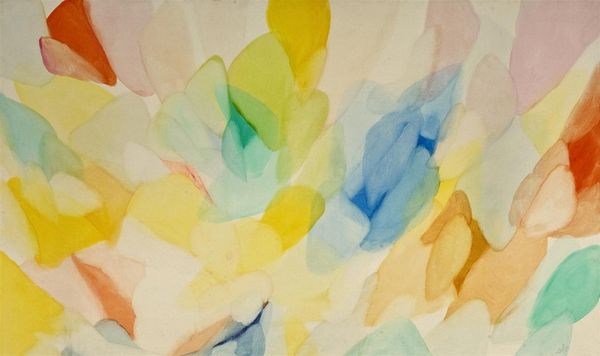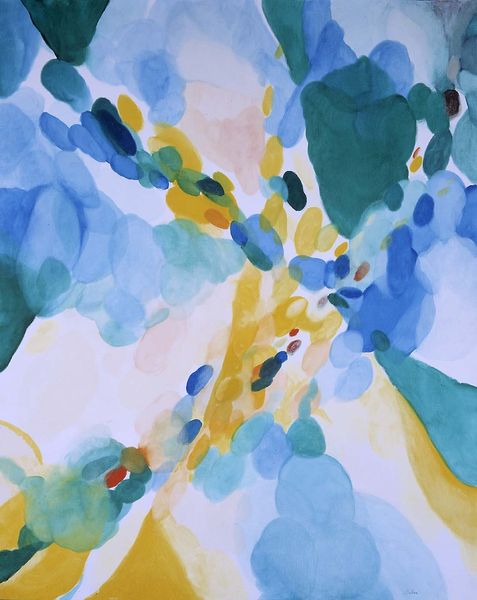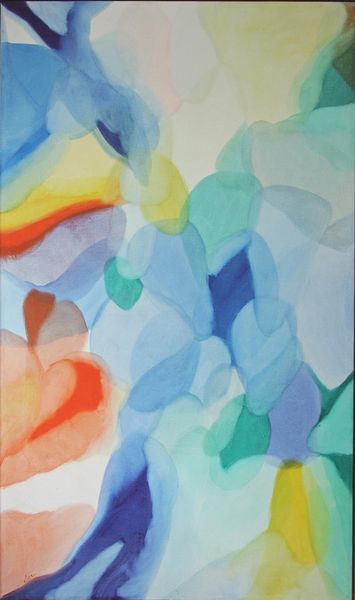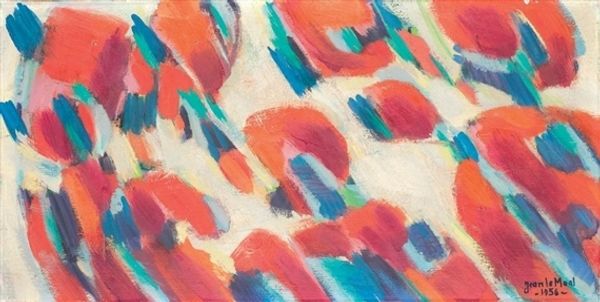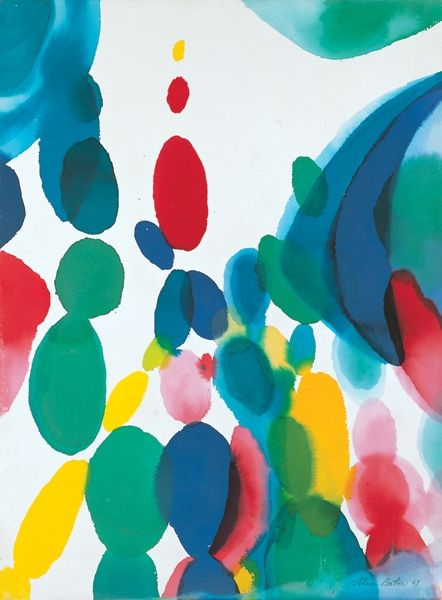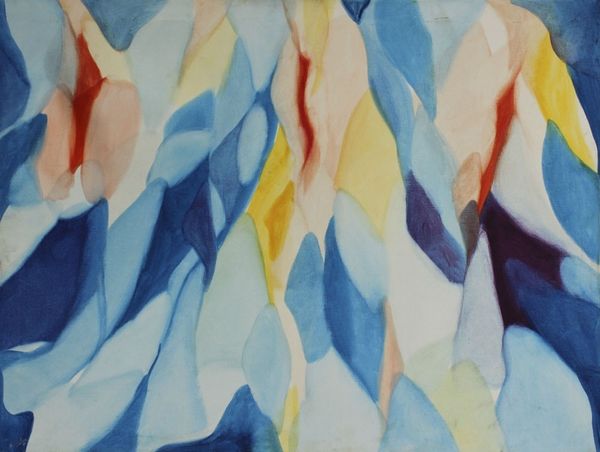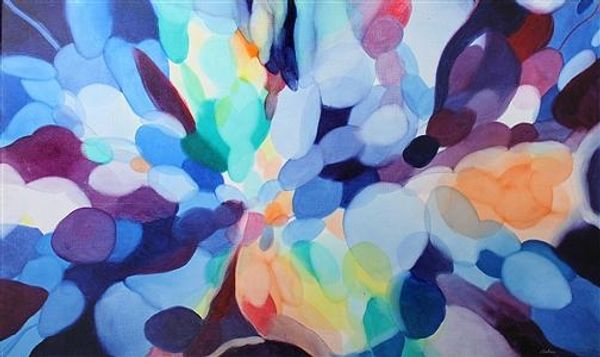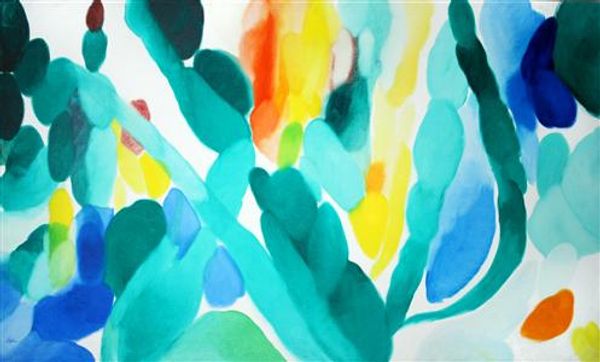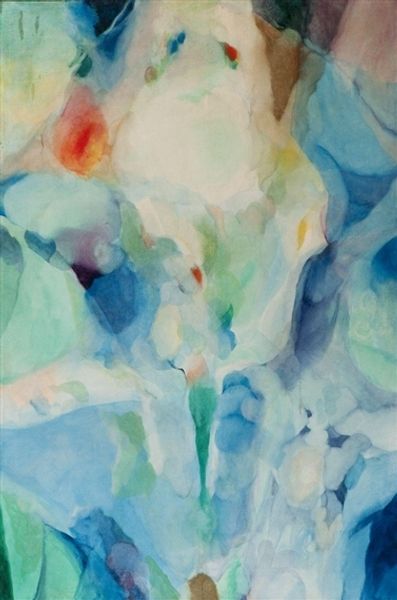
Copyright: Alice Baber,Fair Use
Curator: This painting is "Piper's Near," crafted in 1965 by Alice Baber. Baber primarily used acrylic paint to realize the composition, aligning the work with the Color Field movement. What strikes you most immediately about it? Editor: The lightness, definitely. It’s incredibly airy. The blobs of color remind me of floating petals or perhaps colored stones seen through clear water. There’s something dreamlike in how the forms aren’t quite defined, melting at the edges into the white background. Curator: It’s interesting you say that. Baber's career coincides with rising feminist art movements, and there’s a recurring motif in her work to destabilize the picture plane. “Piper’s Near” can be interpreted through the lens of abstraction as a rebellion against the rigid patriarchal structures prevalent in art at the time. It suggests an openness to re-imaging systems that move beyond a singular narrative. Editor: Thinking about process, the technique itself must have required a lot of planning. Working with acrylics on such a scale means she would have had to manage the materials in layers, likely diluting the paints to achieve the translucent effect we see. The work suggests an intensive amount of both deliberation and improvisation. Curator: And context is everything. During the '60s, we witnessed substantial social upheavals—the Civil Rights Movement, feminist activism, the escalation of the Vietnam War. Baber’s abstraction steps outside of dominant aesthetics in an active commentary during times of social change. In some ways, abstraction offered women artists like Baber, as well as Alma Thomas, an alternate route into galleries and museum collections from which their figurative work was often excluded. Editor: True. Her move away from traditional representational modes highlights an emphasis on material expression. I see "Piper's Near" as engaging in a tactile dialogue where paint isn't just a tool but a subject in and of itself. The color and texture contribute heavily to its overall feel. Curator: I see it as deeply linked to her role as a woman artist in the '60s pushing back against the prevailing art narrative through abstraction. Editor: Agreed. Seeing the labor behind its production reveals the nuances in abstract art that invite engagement in ways beyond aesthetic appreciation. Curator: I believe a key takeaway is how Baber challenged conventional representation while also mirroring a pivotal point in social justice movements of the era. Editor: From the vantage point of art history, this prompts the study of materials alongside social contexts when evaluating “Piper’s Near.”
Comments
No comments
Be the first to comment and join the conversation on the ultimate creative platform.
